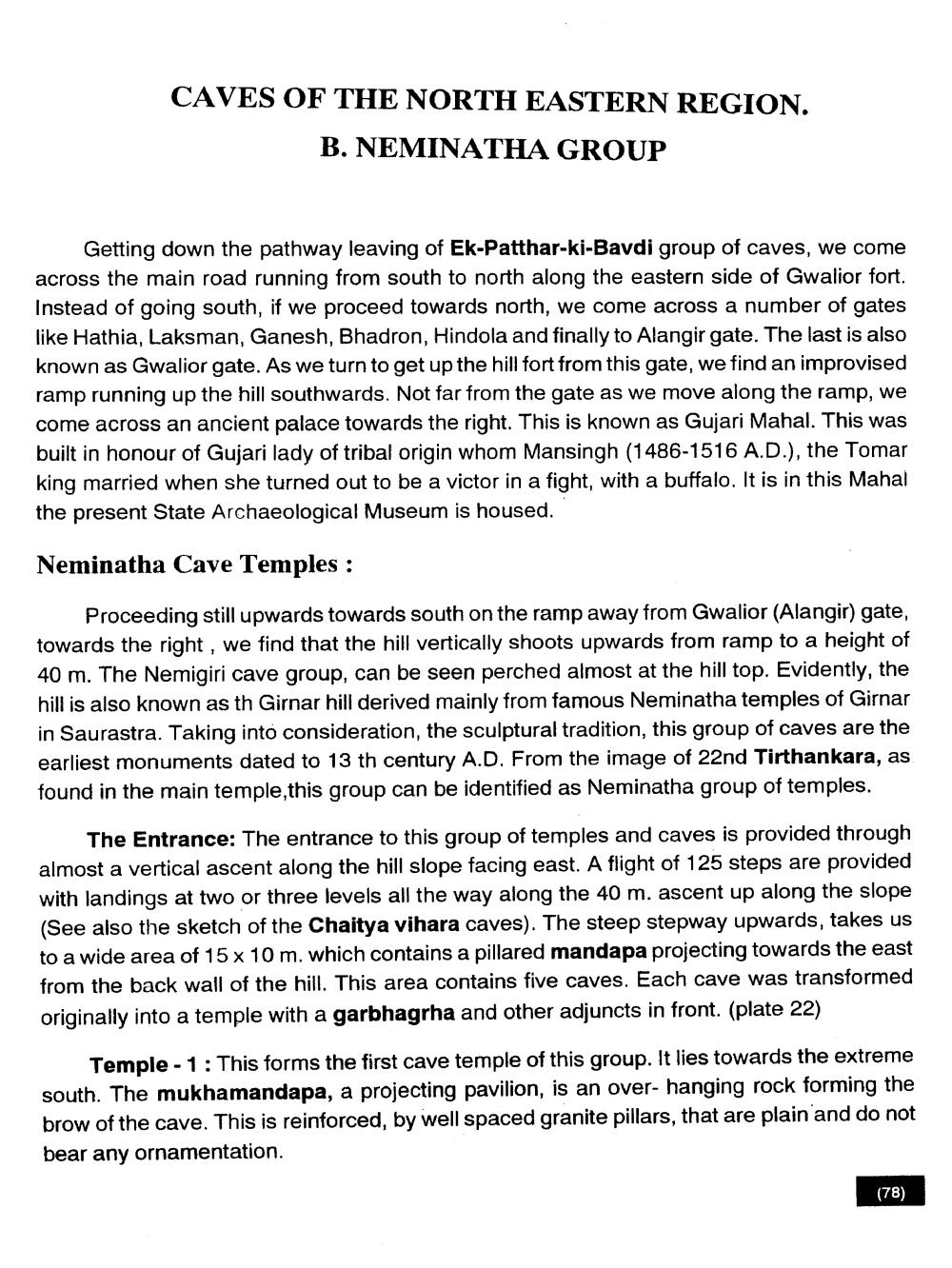________________
CAVES OF THE NORTH EASTERN REGION.
B. NEMINATHA GROUP
Getting down the pathway leaving of Ek-Patthar-ki-Bavdi group of caves, we come across the main road running from south to north along the eastern side of Gwalior fort. Instead of going south, if we proceed towards north, we come across a number of gates like Hathia, Laksman, Ganesh, Bhadron, Hindola and finally to Alangir gate. The last is also known as Gwalior gate. As we turn to get up the hill fort from this gate, we find an improvised ramp running up the hill southwards. Not far from the gate as we move along the ramp, we come across an ancient palace towards the right. This is known as Gujari Mahal. This was built in honour of Gujari lady of tribal origin whom Mansingh (1486-1516 A.D.), the Tomar king married when she turned out to be a victor in a fight, with a buffalo. It is in this Mahal the present State Archaeological Museum is housed.
Neminatha Cave Temples :
Proceeding still upwards towards south on the ramp away from Gwalior (Alangir) gate, towards the right, we find that the hill vertically shoots upwards from ramp to a height of 40 m. The Nemigiri cave group, can be seen perched almost at the hill top. Evidently, the hill is also known as th Girnar hill derived mainly from famous Neminatha temples of Girnar in Saurastra. Taking into consideration, the sculptural tradition, this group of caves are the earliest monuments dated to 13 th century A.D. From the image of 22nd Tirthankara, as found in the main temple, this group can be identified as Neminatha group of temples.
The Entrance: The entrance to this group of temples and caves is provided through almost a vertical ascent along the hill slope facing east. A flight of 125 steps are provided with landings at two or three levels all the way along the 40 m. ascent up along the slope (See also the sketch of the Chaitya vihara caves). The steep stepway upwards, takes us to a wide area of 15 x 10 m. which contains a pillared mandapa projecting towards the east from the back wall of the hill. This area contains five caves. Each cave was transformed originally into a temple with a garbhagrha and other adjuncts in front. (plate 22)
Temple - 1: This forms the first cave temple of this group. It lies towards the extreme south. The mukhamandapa, a projecting pavilion, is an over- hanging rock forming the brow of the cave. This is reinforced, by well spaced granite pillars, that are plain and do not bear any ornamentation.
(78)




